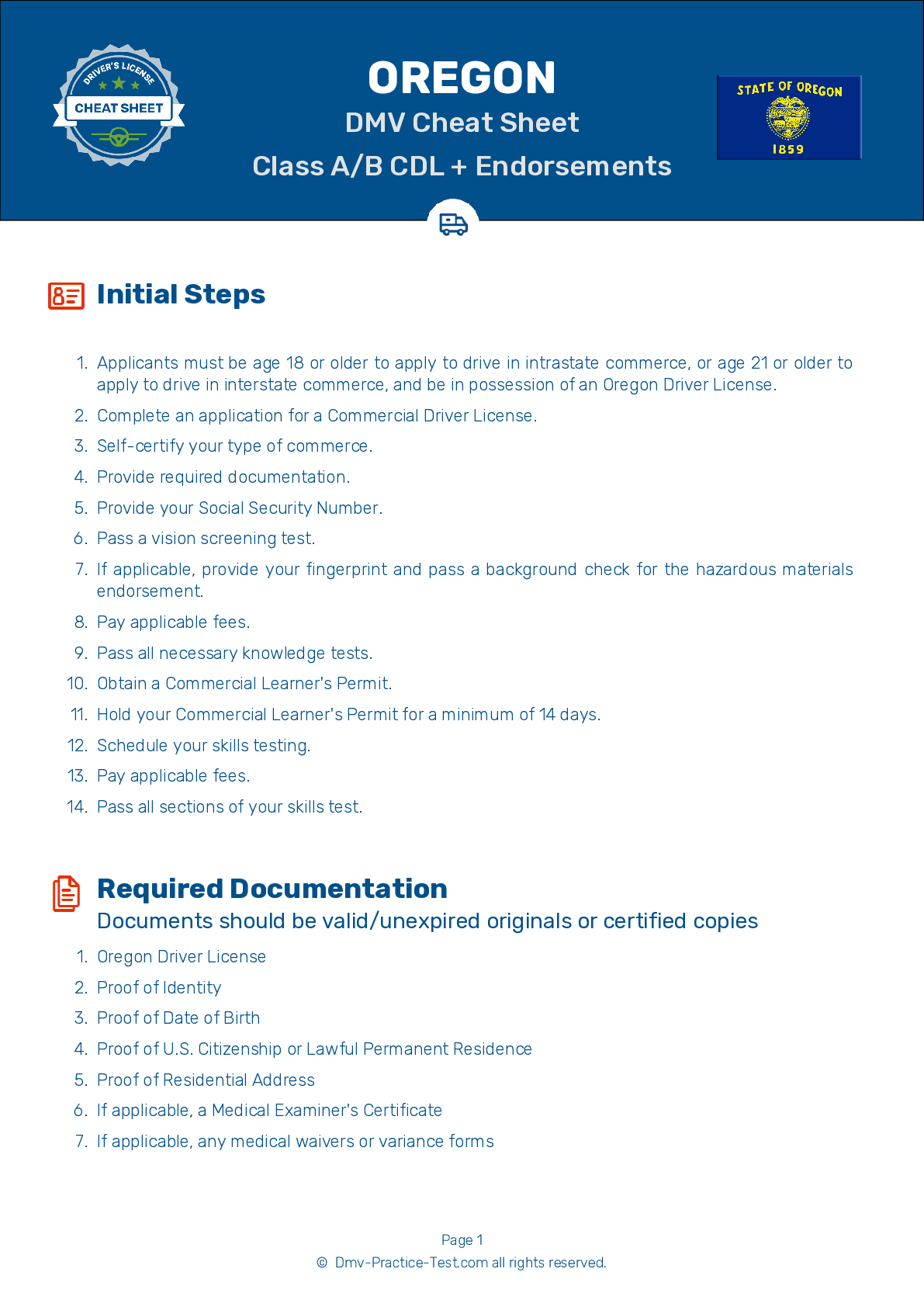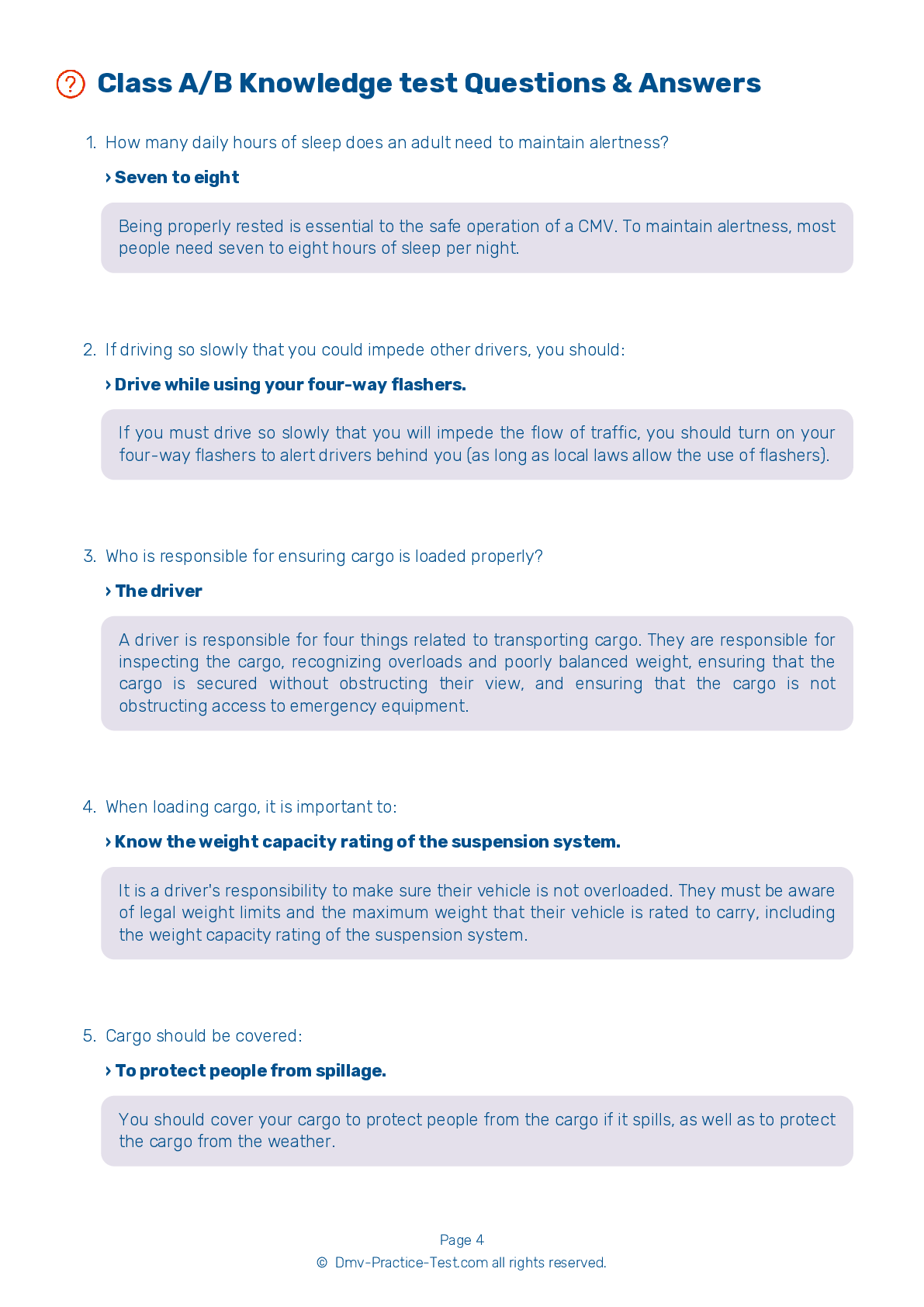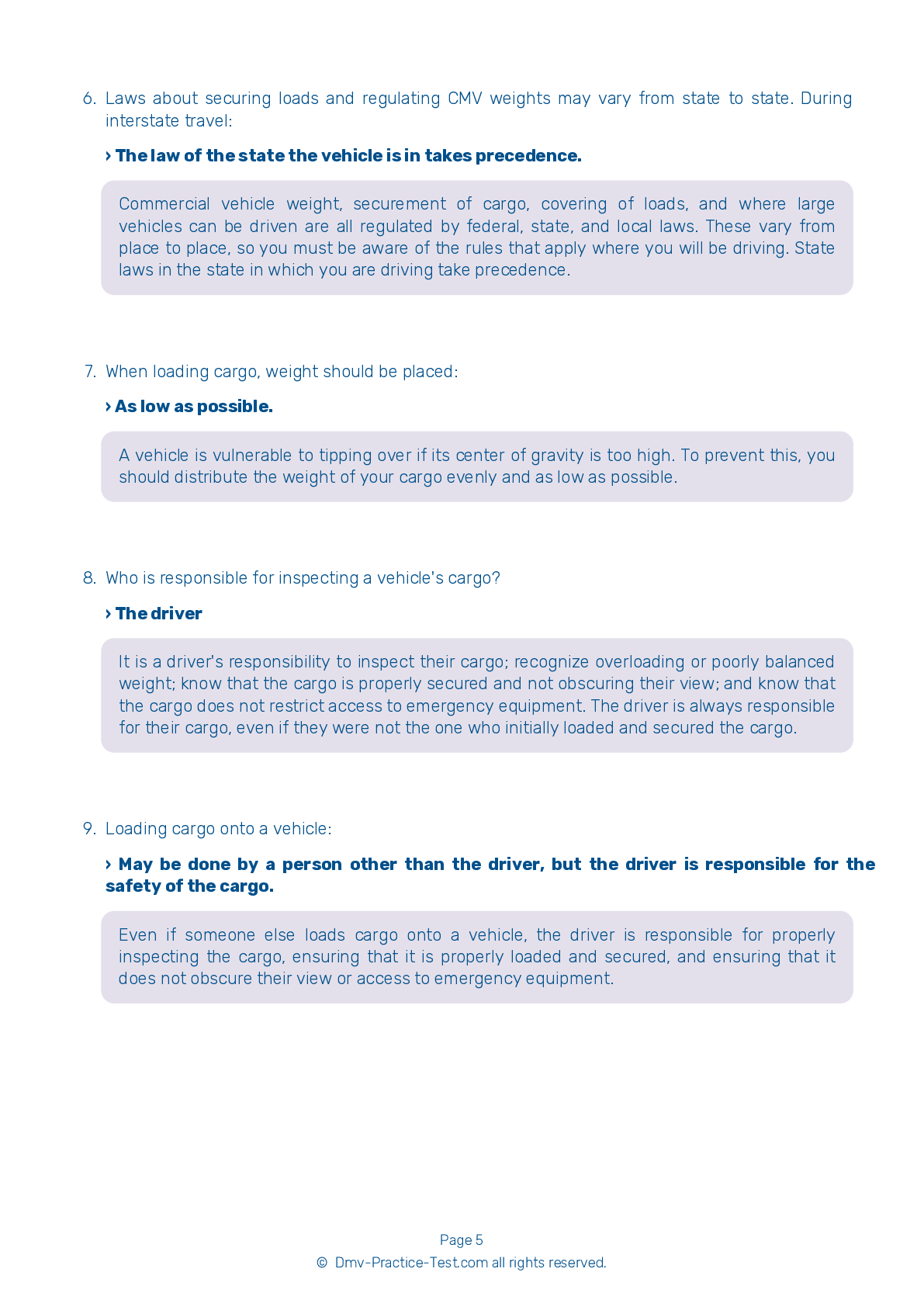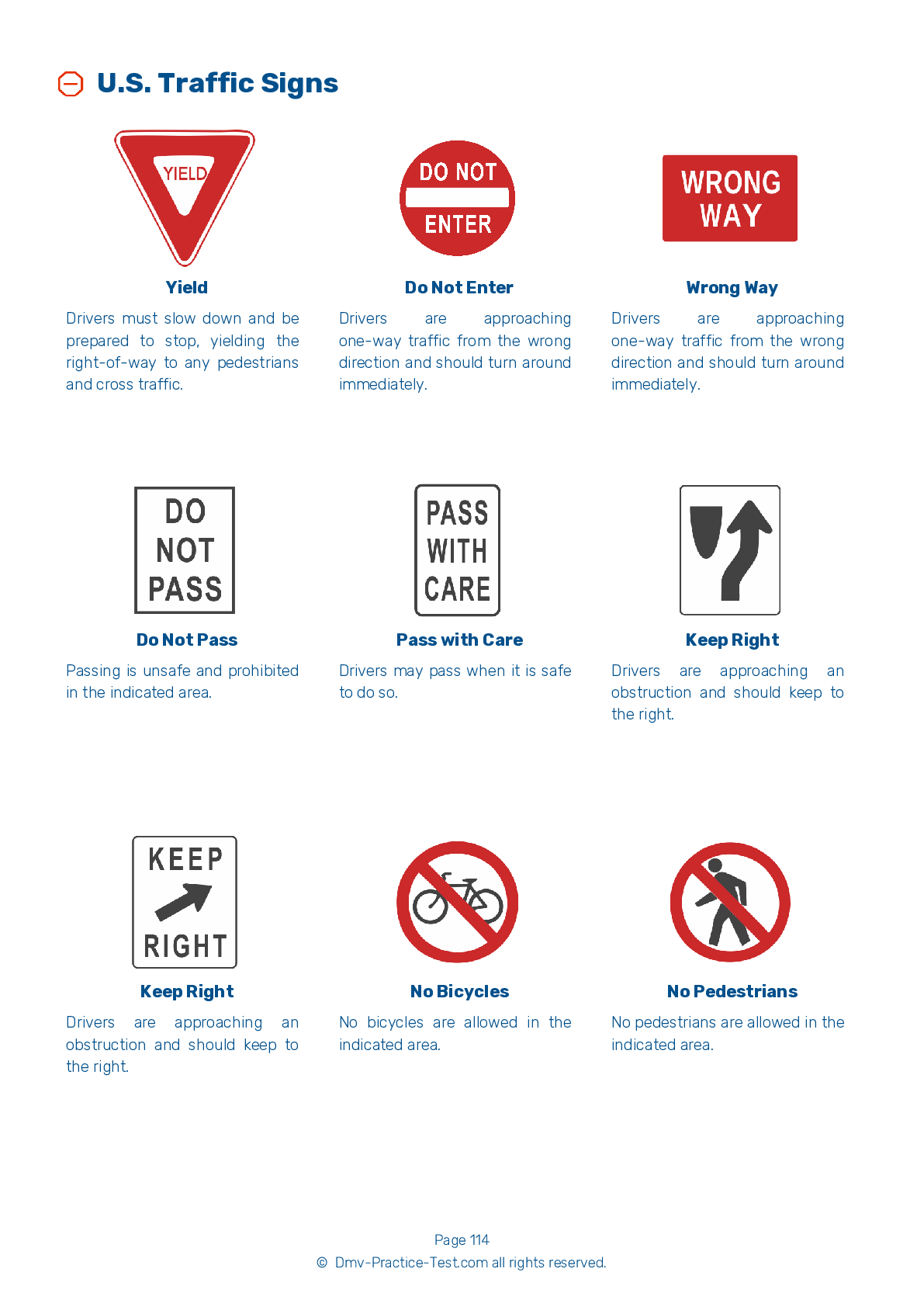Air Brakes #1
Air Brakes Endorsement Test | Oregon 2025 #1
Train for FREE online with our Oregon CDL air brake test. The official exam test consists of several obligatory parts, with all of them checking your knowledge of different blocks of road rules. If you need to obtain a OR Class A/Class B driver license in 2025, practice as much as possible. Free sample tests published on our website will help you check and improve your knowledge and boost your grades. Please bear in mind that the requirements for CDL may vary from state to state.
25
20
20
1 . The application pressure gauge:
Shows the number of times the brakes have been used.
In an air brake system, the application pressure gauge shows how much air pressure is being applied to the brakes. Not all vehicles with an air brake system have this gauge.
2 . What happens if the air pressure in a system's air tanks falls below 60 psi?
The vehicle should stop.
In an air brake system, a low pressure warning signal should activate if the pressure in the air tanks falls to a level below 60 psi. This signal may be in the form of a warning light or a wig wag.
3 . Once the air tanks are at an air pressure level of 125 psi, the air compressor governor will:
An air compressor governor will stop the compressor from pumping air once the air tanks are at an air pressure level around 125 psi. This air pressure level is referred to as the "cut-out" level.
4 . Brake fading is caused when:
Brakes are wet.
Using the brakes excessively will cause them to overheat, making them less effective. This is referred to as "fading."
5 . An Anti-Lock Braking System (ABS):
Should only be used if all axles have ABS.
Anti-Lock Braking Systems (ABS) are compatible with air braking systems. ABS helps maintain control of a vehicle and prevents the wheels from locking up during hard braking on slippery surfaces. ABS can still provide benefits even if is present on only one axle.
6 . If one air system in a dual air brake system is very low on pressure:
Lights on the outside of the tractor will flash.
In a dual air brake system, if one of the air systems gets very low on pressure, either the front or rear brakes will not be operating fully. You should bring your vehicle to a safe stop and have the air system repaired.
Search the best driving school in your neighbourhood
2025 Oregon | Frequently Asked Questions
To acquire a CDL Hazmat endorsement in Oregon, you need to pass a written test. First, you must apply at a DMV office, provide proof of U.S. citizenship or lawful permanent residency, and pass the Hazmat knowledge test. After passing the test, you'll need to undergo a federal TSA background check. Once cleared, your new endorsement will be added to your CDL.
To obtain a CDL Hazmat license, you must have a Commercial Driver's License (CDL). You should also be at least 21 years old, a U.S. citizen or have lawful permanent residency. You must pass the Hazmat knowledge test and a Transportation Security Administration (TSA) background check. Lastly, you should have a clean driving record and no disqualifying criminal offenses.
When applying for a CDL Hazmat endorsement, you need to provide proof of U.S. citizenship or lawful permanent residency. This could be a passport, birth certificate, or Permanent Resident Card. You also need your current valid Commercial Driver's License (CDL). Finally, you must complete and pass the TSA background check, and the Hazmat knowledge test results are required.
Yes, there is a dedicated written test for the CDL Hazmat endorsement. The test covers topics like loading and unloading hazardous materials, bulk packaging marking, driving and parking rules, and emergency response procedures. This knowledge test is required in addition to the general CDL written test. You must pass this test to receive your Hazmat endorsement.
The written test for the CDL Hazmat endorsement covers various subjects related to hazardous materials. These include understanding hazard classifications, proper loading and unloading procedures, use of placards and labels, transport rules and regulations, emergency response procedures, and the handling and transport of specific types of hazardous materials.
Yes, there are extra charges associated with acquiring a CDL Hazmat endorsement. These fees cover the written test, fingerprinting, and a background check. The exact cost can vary based on the state you're in, but in Oregon, the total fee is typically around $100. It's advisable to check the exact costs with your local DMV office.
Yes, to obtain a CDL Hazmat endorsement, you must pass a Transportation Security Administration (TSA) background check. This includes a review of your criminal, immigration, and FBI terrorist watch list status. The purpose is to ensure you are not a security risk and can safely transport hazardous materials.
Yes, specialized training or certification is mandatory for the CDL Hazmat endorsement. Applicants must pass a written knowledge test on hazardous materials regulations and safety procedures. Additionally, they must undergo a Transportation Security Administration (TSA) background check. The training ensures drivers can safely handle and transport hazardous materials.
No, you cannot legally transport hazardous materials without a valid CDL Hazmat endorsement in Oregon or any other state. The endorsement ensures that drivers have the necessary training and knowledge to handle and transport hazardous materials safely. Violating this regulation can lead to severe penalties, including fines and suspension of your CDL.
Yes, you can add a CDL Hazmat endorsement to your existing CDL license. You don't need to apply for a new CDL. However, you must pass the Hazmat knowledge test, undergo a TSA background check, and pay the required fees. The endorsement is then added to your existing CDL upon approval.




